Ursula has very unique photographic style, and a lot of talent. I first saw her work on 1x.com and then followed to her own web site. I find it very fascinating how through abstract forms and colors Ursula manages to convey various moods, feelings, and emotions. I was very happy when Ursula agreed to this interview because I had so many questions to ask her!
Everybody please meet Ursula
Tell a little about yourself. Are you a full time photographer?
I was born in the north-eastern part of Argentina, not too far from Iguazu Falls. I grew up in both Argentina and Chile. I moved to the USA to attend university, and eventually moved permanently to Canada. I now am Canadian, living in the interior of beautiful British Columbia. British Columbia is a beautiful province. It’s a mountainous area, with lots of trees, lakes and rivers, waterfalls, rocks, and wildlife. For me, it’s a great place to live.
I am married. My husband and I have five children. I have a degree in Education with a major in Art and History. Currently I dedicate most of my time to photography.
Do you have other hobbies?
I don’t have any hobbies at this time, although I love beadwork, hiking, and reading mysteries.
Can you describe the “mental” process of creating a photograph? What I mean is how do you decide to take a photo? Do you see something that catches your attention and photograph it, or first the idea of a certain photo comes to you and then you execute it?
It’s a variety of things.
At times I set out very deliberately to make a certain kind of image. For example, “bounce” is such an image. I participate at DPChallenge occasionally. One of the challenges last year was “Point of Color”, where the assignment was to capture an image where a point of color is the main subject.
Photo by Ursula Abresch. Click on the photo to enlarge.
I decided to photograph a group of paper strips taped together at one end for this challenge. I entered a different photo into the challenge, but “bounce” was the result of this assignment. The composition, the setup, everything was quite deliberate. “Coastal dawn” is a similar story. I had been experimenting with waterscapes, closeups of reflections on water in a pan, and I deliberately set out to create a sunset/sunrise impression. Most of my studio work is quite deliberate.
I prefer to work outdoors though, in natural light. When working outdoors I usually have a theme for the day. For example, “an autumn song” and “late fall” are both made on days when I set out to capture the mood and the spirit of Autumn. One was made in October, the other in November of last year.
Photos by Ursula Abresch. Click on the photo to enlarge.
Sometimes I set out to work on a particular technique. In those cases I am not so interested in the subject, but more in the potential of the subject for a particular technique. Two examples are “bittersweet” and “burn”. The objective was to make photos that would be good for HDR processing techniques. I think they worked well for that exercise.
Photos by Ursula Abresch. Click on the photo to enlarge.
Same with “needles”: the idea here was to practice using the Lensbaby. The subject/final photo wasn’t planned, what was planned was the method. I am happy with the result nevertheless.
Photo by Ursula Abresch. Click on the photo to enlarge.
Sometimes a photo just happens. “Hunter” is such a photo. I was driving home to Canyon Village in Yellowstone National Park on a rainy evening, and this scene happened. I am glad it did.
Photo by Ursula Abresch. Click on the photo to enlarge.
Finally there are the photos that are conceived over time and carried out mainly in Photoshop. “Revelation” and “my BC” are like that. “My BC” uses 2 pictures, one made in April of last year, the other in August. They are combined in Photoshop for the final image. The base photo for “revelation” was made in the Fall of 2009, the idea for the final image didn’t come to me until a year later, when I was experimenting with adding texture files to images to create more visual interest and intensify the story. I think the process worked well in both instances.
Photos by Ursula Abresch. Click on the photo to enlarge.
What are your sources of inspiration?
The place where I live, British Columbia, has become an important source of inspiration in my photography. It is a subject for some of my more representational images, and also for many of my more abstract images, where I try to reflect the essence of a subject, or where I use a subject to express emotion. For example, many of my closeup images of the Columbia river are an attempt to reflect my own thoughts and feelings in pictures.
Painters from Canada, in particular Western Canada also influence my work. We live in the same world, so I like to see if I can see what they saw the way they saw it. The works of Emily Carr, especially her fantastic studies and paintings of trees, are a constant source of inspiration for my photos. For a while, and even now, I was quite inspired by the works of Takao Tanabe, a more recent painter than Emily Carr, especially his waterscapes. Lately I’ve been looking at works by the Group of Seven, in particular Lawren Harris and A.Y. Jackson – I find their work very inspiring!
Last, I’ve been trying to familiarize myself with at least some of the printmaking by First Nations people in British Columbia, trying to find ways to apply some of their concepts to my photography.
Do you try to learn from other photographers?
Yes. I look at the work of other photographers all the time, and try to learn from them. Some names that come to mind are Freeman Patterson, Dorothea Lange, Alfred Stieglitz, John Shaw, Galen Rowell, Tim Fitzharris, Irving Penn (especially his still-life work).
But as mentioned in the last question, more so than from photographers I learn from painters.
What makes great photograph to stand out from other good photographs?
Good technical skills are essential. But photograph that stands out is a creative visual composition with one or more of the following: excellent light, captivating mood, compelling story, irresistible graphic appeal. Not all are present in all great photographs, but some always are. Some pictures draw you in because they tell such a good story. Others because you can strongly feel the mood when you look at it. Yet others simply overwhelm you with the beauty of their design. In my view, the more characteristics combined into one photo, the stronger the overall appeal.
You have beautiful abstract photos, such as “Femininity”, “Firewater”, “Coastal Dawn”, “Drifting”. How do you create them? Is this made in camera or there is Photoshop involved?
There is Photoshop involved in all of my photos. For me, and for any digital photographer, it wouldn’t be possible to make a final print without using Photoshop or some other photo-editing software at some stage. Making the final print is the goal, and in the digital world you can’t do that without software.
Photos by Ursula Abresch. Click on the photo to enlarge.
The four photos you mentioned are all done in studio. Three (“firewater”, “coastal dawn” and “drifting”) are closeups of reflections in a pan of water. “Femininity” is also a closeup of a reflection in a pan of water but with a glass vase partially submerged into the water as the point of focus. Imagine being by a calm lake in Autumn, sun behind you shining on the beautiful trees at the other side of the lake. What do you see on the surface of the lake? A beautiful reflection of the Autumn colors. That is essentially what I am doing here, using a pan of water and reflective materials on the far side to make closeups of these reflections on the surface of the water. For added interest, the water in the pan is not still but moved around. The setup is quite simple, and the results are somewhat predictable but not entirely, at least not yet, for me. The variable is the water movement.
Photos by Ursula Abresch. Click on the photo to enlarge.
In “coastal dawn” I deliberately put a red dot on the blue reflective material with the intention of simulating a sunset or sunrise. I think it worked. In “femininity” I put the vase in the water and moved water over it while photographing because I wanted an interaction between the very hard edge of the glass and the soft movement of the water. The other two, “firewater” and “drifting” are simply closeups of the colorful reflections on the surface of the moving water.
I have to add- this method is not my invention. I learned to make this kind of pictures from Willy Marthinussen at 1x.com.
How did you learn to use Photoshop?
I started out editing my images in Paint Shop Pro. I switched to Photoshop in 2007. I learned mainly by trial and error, but also by asking questions of other photographers on the net at sites such as DPChallenge. I have worked my way through a few online tutorials, and that also was helpful.
I can’t help it, but I have to know technical details. What equipment do you use?
I started out with Nikon digital because I liked the name “Nikon” better than “Canon”. I also liked the intuitive menus, the way the Nikon fit in my hands, and the slightly less creamy look of the photos.
Camera bodies:
Nikon D200 and Nikon D7000
Lenses:
Nikon AF Nikkor 50mm f/1.8
Nikon MF Nikkor 200mm f/4 AIS
Nikon MF Zoom-Nikkor 75-150mm f/3.5 E
Lensbaby 2.0
Sigma 150mm f/2.8 EX APO Macro EX DG HSM
Sigma 70-300mm f/4-5.6 APO DG Macro
Tokina AF 12-24mm f/4.0 AT-X Pro DX
Other:
Manfrotto 055PROB tripod with Manfrotto 486RC2 ball head
Processing:
PSCS4 and Photomatix on a MacBook Pro connected to a Cinema Screen
HP B9180 Photosmart Pro printer
Do you use flashes and light modifiers ?
I use available light most of the time. I do have a Nikon SB600 flash that I use occasionally, for example in the creation of waterscapes such as the four images you mentioned in your question about my abstracts.
And finally, my traditional question: If you had only one advice to give to beginner photographer, what would it be?
Always remember that technical skills are essential, but it is artistic perception that finally makes the photo.
Thank you Ursula for taking time to answer my questions and for your beautiful and inspiring work!
If you liked Ursula’s work and want to see more you can visit her page at 1x.com or her own website at www.ursulasphotos.com/

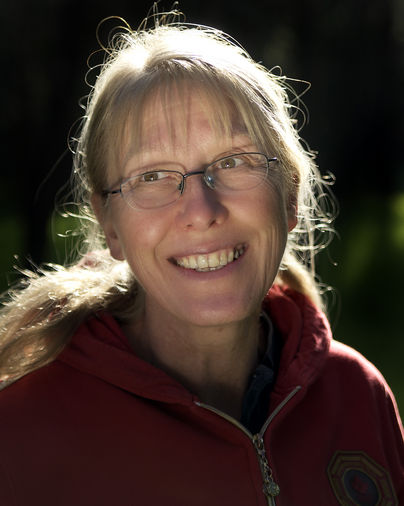


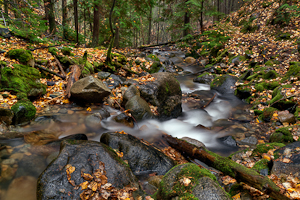


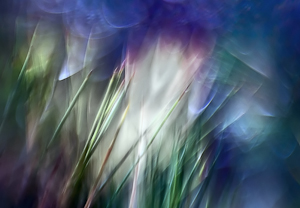
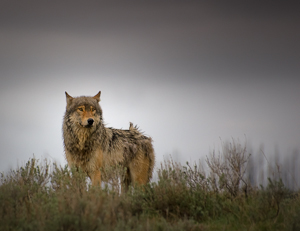

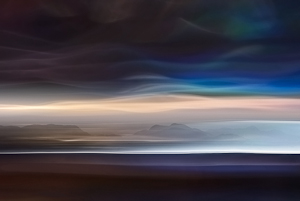
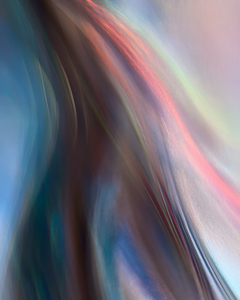
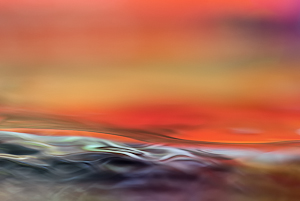




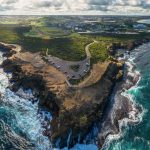


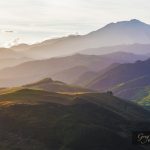
Amazing Photos. Really!
Great interview!
Not sure what the trick is – capturing the image or using Photoshop….anyhow, the results are stunning!
IMy experience of Ursala Abresh is that she has a sense of tremendous of imagination that continues to keep me captivated and entertained. I would like to see her works featured in Art Specials and Forums in Toronto. Ottawa and Montreal so her work becomes weaved into a greater part of our nation’s spiritual portrayal much like the Group of Seven and later organizations. have..
Wondered how she captured the water and reflections.
Thanks for the interview.